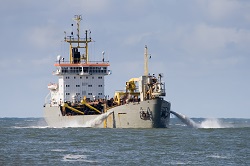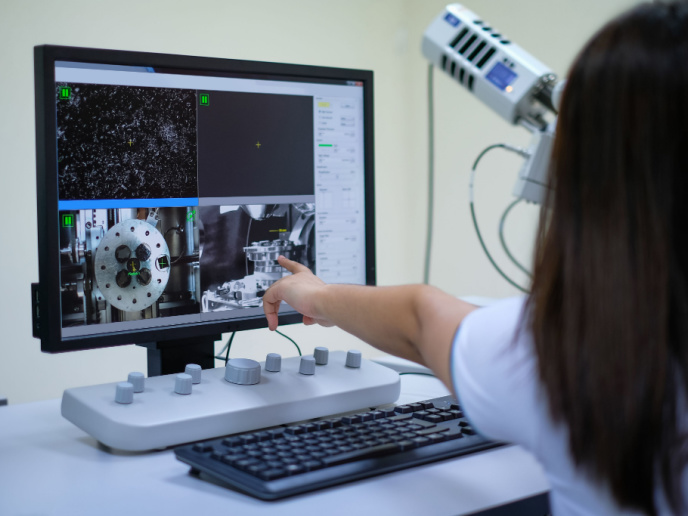Software innovation lends a hand to the dredging industry
Without computers, investigating soil-fluid interactions is a real money pit. It requires large scale experiments where wind, gravity, waves, currents and changing seabed characteristics have to be factored in and change with every new location. A software overcoming the numerical issues associated with large deformations and fluid pressures that occur in the interaction between soils and fluids, on the other hand, could be a real game changer. ‘Our goal was to solve problems involving large deformations of soft soil (sand, clay, peat) in interaction with water, which are characteristic of offshore, near-shore, coastal engineering and flood protection,’ says Dr Alexander Rohe, MPM-DREDGE network coordinator and researcher at Deltares. The project already benefitted from a head-start in pioneering work from the University of Cambridge and Deltares. The two institutions had identified the so-called Material Point Method (MPM) as a high-potential solution for solving soil-fluid interaction problems, whilst support from the four largest European dredging companies under MPM-DREDGE has enabled them to come up with specific applications for this sector. The dredging industry is indeed crucial for tackling issues related to the likes of port development, land reclamation, oil and gas exploration and exploitation, offshore wind farms, and a host of other initiatives involving soil-fluid interaction. Appealing to the European dredging industry MDM-DREDGE applications include the dredging of soil for sand mining and related risks of liquefaction and breaching, leading to failure of the underwater slopes; installation of geocontainers for construction of breakwaters; as well as erosion modelling for the design of offshore foundations, scour protection, revetments, underwater slopes and dikes/levees. Now completed, the project has successfully developed a 3D computer code based on MPM which can be used to model large deformation problems for soil-fluid interactions. This numerical tool has been validated, demonstrated, and integrated into the joint software Annura3D that combines earlier work from both Cambridge and Deltares. ‘We’ve achieved significant enhancements of MPM towards modelling of two continua, i.e. water and solid, with their mutual interaction. Water can flow into solid soil bodies, flow through them and can also seep out, causing deformation of the soil. The new approach also enables the modelling of state transition, i.e. the fluidisation of solid material, and solidification or sedimentation of soil-water mixtures or slurries,’ says Dr Rohe. With their new software, the team hope to convince the dredging industry of using advanced numerical modelling techniques to improve the efficiency of their dredging operations and the design of their constructions. A beta-version was released in January 2017, and the official release is expected for September 2018, as soon as the consortium is done testing and validating new functionalities. From this point onwards, the Anura3D MPM Research Community will pursue development and new releases will be scheduled every six months. ‘The software is currently not open source but it is available upon request. We are working towards a fully open-source release within the next three years,’ Dr Rohe says. New research projects have already started which build upon the results of the project, whilst additional H2020 proposals have been submitted for evaluation.







